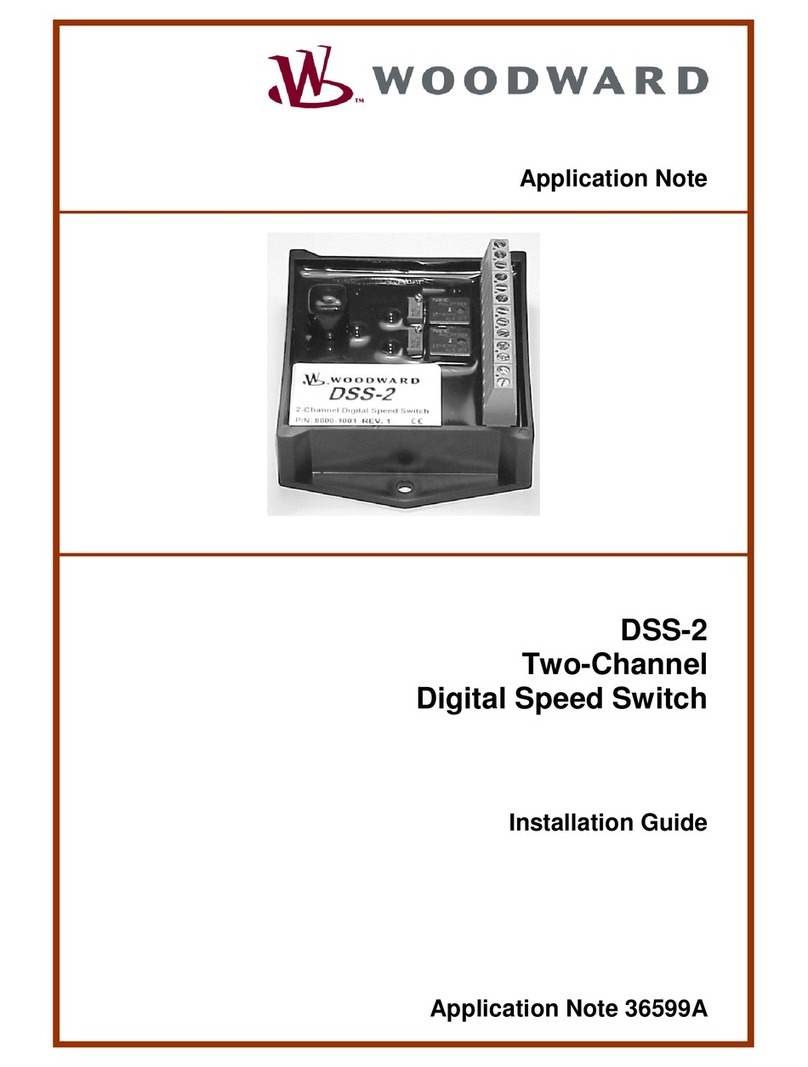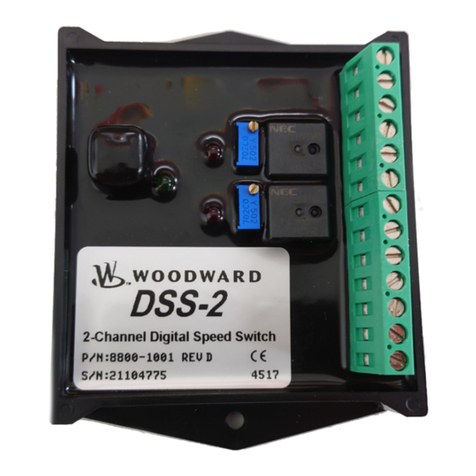
Manual 82510 Magnetic Pickups and Proximity Switches
Woodward 3
Chapter 1.
Magnetic Speed Pickups
Be prepared to make an emergency shutdown when starting the
engine, turbine, or other type of prime mover, to protect against
runaway or overspeed with possible personal injury, loss of life, or
propert
dama
e.
General Information
The magnetic speed pickup (MPU) is used to detect the speed of the prime mover. An MPU is necessary
when the prime mover drives something other than an alternator. It is also often used where an alternator
is driven directly by the prime mover and when a control signal is necessary before the alternator comes
up to its proper output voltage. A speed sensor circuit, either a section on the governor amplifier chassis
or a separate unit, is needed to convert the MPU’s output signal to one usable by the governor amplifier.
The magnetic pickup produces a voltage output when any magnetic material moves through the magnetic
field at the end of the pickup. Since most engines and turbines have flywheels or other large gears made
of magnetic material (usually iron or steel), magnetic pickups can usually be installed without adding
attachments to a gear or shaft. Nonmagnetic materials, such as aluminum, brass, and some stainless
steels, will not excite the magnetic pickup.
The MPU makes use of a “stray magnetic field” and no provision for return magnetic circuits or paths is
necessary. Any device which produces a dynamic discontinuity of magnetic material in the field of the
pickup will produce an electrical voltage. Although gears are the normal devices measured by an MPU,
other devices such as a vibrating surface, moving bar, crank, wheel spokes, or a steel screw head
mounted on some moving surface will work equally well if surface speed and other factors are taken into
account. The MPU may be excited by a keyway or slot in a wheel, but there is likely to be an unwanted
background signal due to varying density or eccentricity of the material. It is better to excite the MPU from
a protrusion on the surface. This places the pickup at a relatively great distance from the materials
between excitation periods and it is less likely to pick up stray signals.
The output voltage of a magnetic pickup is affected by three factors:
Voltage increases as the surface speed of the monitored magnetic material increases.
Voltage decreases as the air gap between the magnetic pickup and the surface of the gear tooth is
increased.
Voltage waveform is determined by the size and shape of the gear tooth in relation to the size and
shape of the pole piece.
With any given speed and clearance conditions, a maximum power output will result when the field is filled
with a relatively infinite mass of magnetic material at one instant and a complete absence of such material
the next. A reasonable approach to these conditions exists when the cross-section of the exciting masses is
equal to or greater than that of the pole piece, and the space between is equal to or greater than three times
the diameter of the pole piece (see Figure 1-1).





























